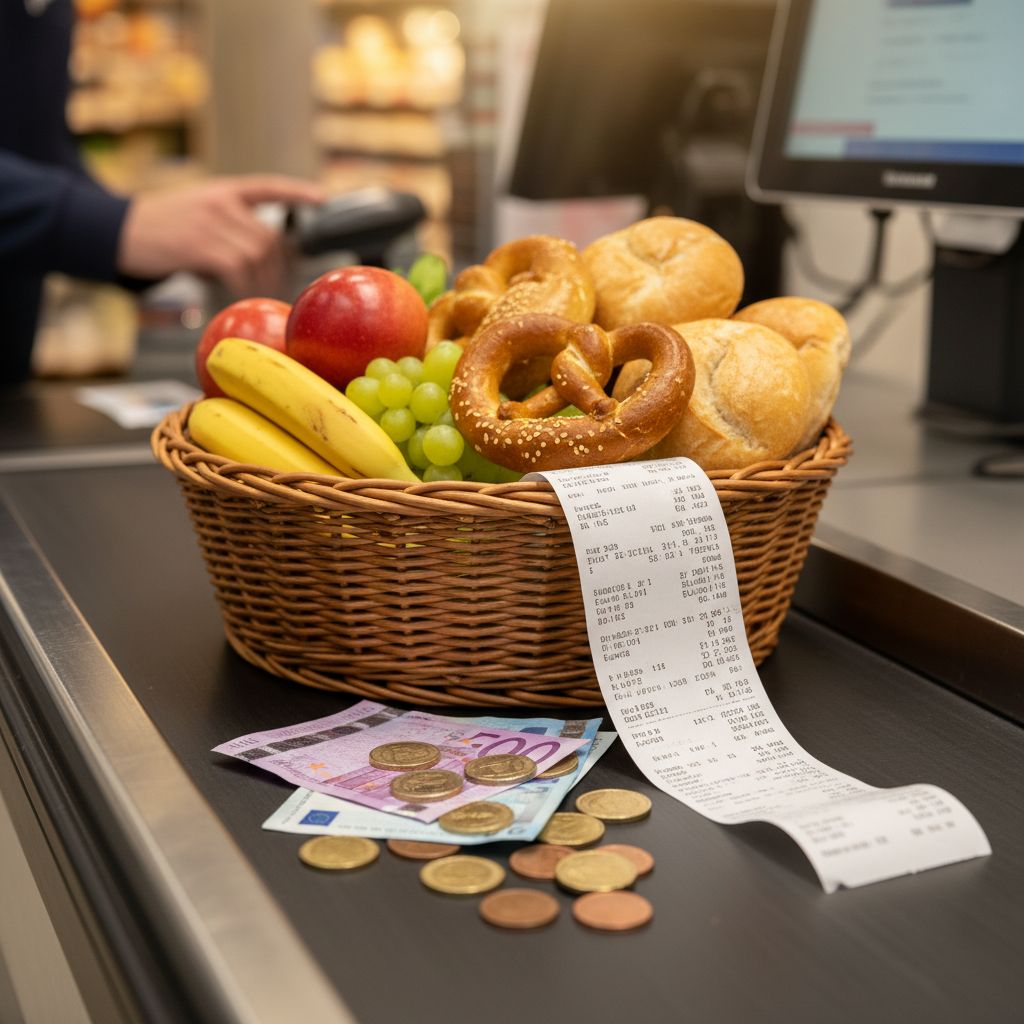Preise im Supermarkt: 2,99 € und €/kg verstehen
[Mini-Quiz] Preise lesen und sprechen: Kommazahlen, €/kg verstehen.
 Dannis
DannisKeywords:

Komma statt Punkt: 2,99 € liest du „zwei Euro neunundneunzig“. Kurz auch: „zwei neunundneunzig“. Für Dezimalzahlen sagt man oft „Komma“: 2,5 = „zwei Komma fünf“.

€/kg erklärt: 3,50 €/kg = Preis pro Kilogramm. 1 kg kostet 3,50 €. 500 g kosten die Hälfte: 1,75 €.

Schnelle Umrechnung: 100 g = 0,1 kg; 250 g = 0,25 kg; 500 g = 0,5 kg; 1 kg = 1000 g.

Weitere Preisangaben: 1,49 € pro Stück (per item). 0,79 € = 79 Cent. 1 € = 100 Cent. Man sagt auch: „ein Euro fünfundzwanzig“ (= 1,25 €).
Comprehension check:
Wie liest man 2,99 € korrekt?
zwei Euro neunundneunzig
zwei Komma neun neun Euro
zwei Euro und neunzig Cent
zwei Euro neun und neunzig Cent
For prices, Germans usually say the euro amount + the full cent number: „zwei Euro neunundneunzig“. Saying “Komma” is common for general decimals, but not typical for money.
Think: say euros + the full cents together.
Was bedeutet 3,50 €/kg?
3,50 € pro Kilogramm
3,50 € pro Stück
3,50 € für 100 g
3,50 € für 500 g
€/kg means the price per kilogram.
€/kg uses kilograms, not Stück or Gramm.
Äpfel kosten 3,20 €/kg. Was kosten 500 g?
1,60 €
1,50 €
3,20 €
2,60 €
500 g sind die Hälfte von 1 kg. Die Hälfte von 3,20 € ist 1,60 €.
Half a kilogram is half the price.
Ergänze: 0,79 € sind ___ Cent.
79
0,79
7,9
7900
1 Euro = 100 Cent, therefore 0,79 € = 79 Cent.
Multiply euros by 100 to get cents.
Related articles
Materials on related topics will help expand your understanding of the topics: